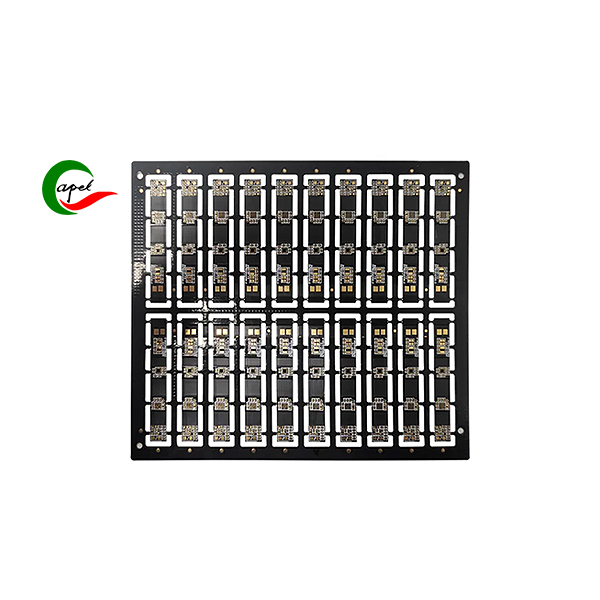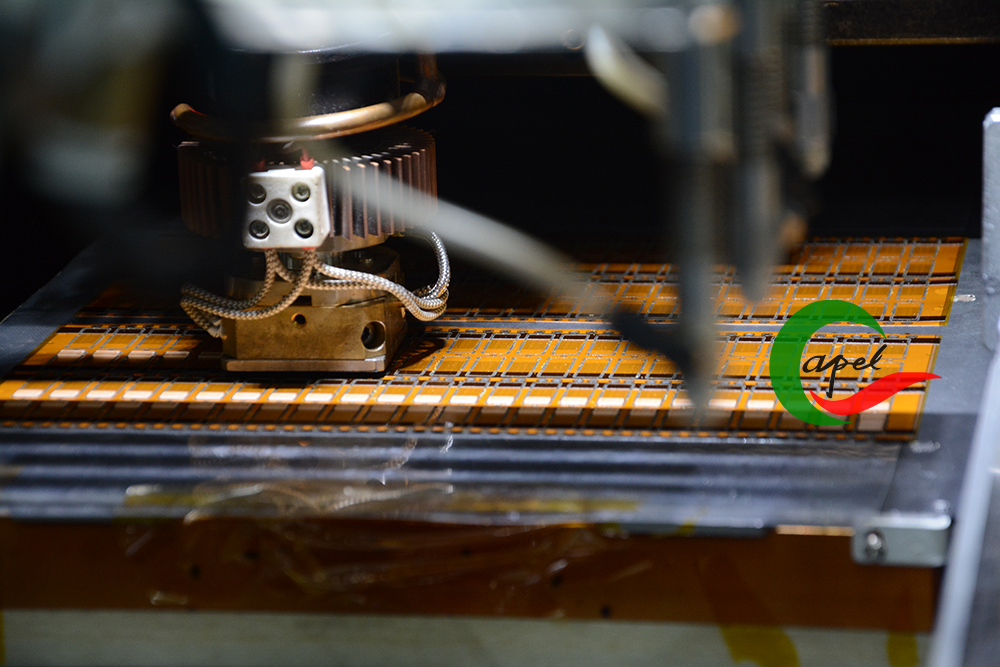Explore the advantages of rigid flex PCBs in complex electronic designs, including their role in reducing size and weight, improving reliability, and enabling innovative product designs. Learn how Capel’s 16 years of experience and successful case studies reflect the company’s technological innovation and expertise in flex PCB manufacturing.
1. Introduce
In the ever-evolving field of electronic design, the need for compact, reliable and innovative solutions continues to drive the industry forward. Rigid-flex PCBs have become a key enabler in meeting these needs, offering a unique combination of flexibility, durability and space-saving features. As a leading flex PCB manufacturer with 16 years of experience, Capel has been at the forefront of leveraging rigid-flex PCB technology to address complex electronic design challenges. In this article, we will explore the main advantages of using rigid-flex PCBs, their role in reducing size and weight, improving reliability, integrating multiple components, and their impact on cost-effectiveness and industry-specific applications. In addition, we will delve into successful case studies demonstrating Capel’s advanced technology and expertise in flexible PCB design, prototyping and manufacturing.
2. What are the main advantages of using rigid-flex PCBs in complex electronic designs?
Rigid-flex PCBs offer several key advantages that make them ideal for complex electronic designs. Its unique combination of rigid and flexible substrates allows for three-dimensional configurations, allowing designers to overcome space constraints and create innovative product designs. The seamless integration of rigid and flexible sections also enhances the overall structural integrity of the PCB, reducing the risk of failure due to mechanical stress. Additionally, eliminating traditional interconnects and connectors in rigid flex PCBs can improve the reliability and durability of electronics by minimizing potential points of failure.
3. How can rigid-flex PCBs help reduce the overall size and weight of electronic devices?
One of the most significant advantages of rigid-flex PCBs is their ability to reduce the overall size and weight of electronic devices. By eliminating the need for bulky interconnects and connectors, rigid-flex PCBs enable more compact and lightweight designs, making them ideal for applications where space is at a premium. The reduction in size and weight not only enhances the portability of electronic devices, but also helps improve aesthetics and user experience.
4. What role do rigid-flex boards play in improving the reliability and durability of electronic products?
The integration of rigid and flexible substrates in rigid-flex PCB enhances the overall reliability and durability of electronic products. Traditional PCBs are susceptible to mechanical stress and vibration, leading to premature failure. Rigid-flex PCBs, on the other hand, are better able to withstand these environmental factors, making them suitable for applications where reliability is critical. Additionally, eliminating solder joints and connectors reduces the risk of intermittent connections, further improving the long-term reliability of electronic equipment.
5. Rigid-flex PCB How to integrate multiple electronic components in a compact space?
Rigid-flex PCBs enable seamless integration of multiple electronic components in a compact space, allowing designers to optimize the layout and functionality of their products. This integration not only reduces the overall PCB footprint but also simplifies the assembly process, thereby improving manufacturability and saving costs. By leveraging the flexibility of PCBs, designers can create complex and space-saving layouts that would be difficult to achieve using traditional rigid PCBs.
6. What are the main challenges in designing and manufacturing rigid-flex PCBs for complex electronic applications?
While rigid-flex PCBs offer numerous advantages, they also present unique challenges during the design and manufacturing process. The complexity of rigid-flex PCBs requires specialized expertise and advanced manufacturing capabilities to ensure the integrity and reliability of the final product. Designing flexible sections to withstand repeated bending and bending without affecting electrical performance is a key consideration. Additionally, the integration of rigid and flexible substrates requires precise alignment and lamination techniques to achieve a seamless transition between the two parts. Additionally, selecting the appropriate materials and adhesives for rigid-flex PCBs is critical to ensuring compatibility with the intended application and environmental conditions.
7. How can rigid-flex PCB improve the overall cost-effectiveness of electronic product development?
Despite the initial challenges associated with the design and manufacturing of rigid-flex PCBs, their overall cost-effectiveness in electronic product development cannot be ignored. Reductions in size and weight save material costs, while integration of multiple components simplifies the assembly process and reduces labor and assembly costs. Additionally, the enhanced reliability and durability of rigid-flex PCBs help reduce maintenance and warranty-related expenses, making them a cost-effective solution in the long run. By simplifying the design and assembly process, rigid-flex PCBs provide a compelling value proposition for electronics developers seeking to optimize manufacturing costs.
8. Which specific industries or applications would benefit most from using rigid-flex PCBs in their designs?
Rigid-flex PCBs are widely used in various industries, and each industry benefits from its unique capabilities. For example, the aerospace and defense industry utilizes rigid-flex PCBs to meet the stringent size, weight and reliability requirements of avionics and military equipment. The medical device industry utilizes rigid-flex PCBs to create compact and durable electronic components for diagnostic and therapeutic equipment. The automotive industry is integrating rigid-flex PCBs into advanced driver assistance systems (ADAS) and infotainment systems to enable space-saving and reliable electronic designs. Additionally, numerous industries such as consumer electronics, telecommunications, and industrial automation benefit from the versatility and performance of rigid-flex PCBs.
9. How can the flexibility of rigid-flex PCB enable innovative and non-traditional electronic product designs?
The inherent flexibility of rigid-flex PCBs enables innovative and unconventional electronic product designs not possible with traditional rigid PCBs. Designers can take advantage of PCB flexibility to create unique form factors, such as curved or folded designs, opening new possibilities for product aesthetics and functionality. This flexibility also extends to the integration of sensors, antennas and other electronic components in non-traditional configurations, opening the door to novel product concepts and user experiences.
10. What are the main considerations when choosing the right materials for rigid-flex PCBs in complex electronic designs?
Rigid-flex PCB material selection is a key consideration in ensuring final product performance and reliability. The selection of rigid substrates, flexible materials, adhesives and coverings must meet the specific requirements of the application, including temperature range, mechanical stress and chemical exposure. Capel’s extensive experience in material selection and compatibility ensures that the right combination of materials is selected to meet the unique needs of each project, resulting in a rugged and reliable rigid-flex PCB.
11. How does rigid-flex PCB support the trend of miniaturization and portability of modern electronic devices?
The trend towards miniaturization and portability of modern electronic devices is driving the demand for compact and lightweight solutions. Rigid-flex PCBs play a key role in supporting this trend, enabling the creation of densely packaged electronic components with a smaller footprint. Their ability to integrate multiple components and eliminate the need for bulky interconnects is in line with the industry’s push for smaller, more portable electronic devices. As electronic products continue to move toward miniaturization, rigid-flex PCBs will remain a key enabler in meeting these design requirements.
12. Success Stories and Capel Technology Innovation
Capel’s case studies of successfully solving industry-specific challenges through rigid-flex PCB technology demonstrate the company’s proven technology, strength, professionalism, advanced process capabilities, strong R&D capabilities and expertise in flexible PCB design, prototyping and manufacturing. advanced technology. By working with customers across diverse industries, Capel has demonstrated its ability to deliver innovative solutions that meet the stringent requirements of complex electronic designs. These case studies demonstrate Capel’s commitment to technological innovation and its position as a trusted partner for customers seeking advanced rigid-flex PCB solutions.
Case Study: Aerospace Application – Overcoming Size and Weight Constraints with Rigid Flex PCBs
Project Requirements:
Our client, a leading aerospace manufacturer, approached us with a challenging project to develop a compact and lightweight electronic control system for a next-generation satellite communication module. The primary requirements included the integration of multiple electronic components in a confined space, stringent weight limitations, and the need for exceptional reliability in the harsh environmental conditions of space.
Innovative Solutions Implemented:
To address the project requirements, our team leveraged our expertise in rigid flex PCB design and manufacturing to develop a tailored solution. We utilized advanced CAD software to create a three-dimensional rigid flex PCB layout that optimized space utilization while accommodating the required electronic components. The flexible sections of the PCB were strategically positioned to enable seamless interconnection between rigid segments, minimizing the need for additional interconnects and reducing the overall weight of the system.
Tangible Outcomes Achieved:
By implementing the innovative rigid flex PCB design, we successfully met the stringent size and weight constraints outlined by the client. The compact and lightweight electronic control system not only exceeded the performance expectations but also contributed to a significant reduction in the overall mass of the satellite communication module. Furthermore, the robustness and reliability of the rigid flex PCBs ensured uninterrupted operation in the extreme thermal and mechanical conditions of space, providing the client with a solution that surpassed industry standards.
Technical and Professional Analysis:
The success of this case study can be attributed to our in-depth understanding of the aerospace industry’s unique challenges and our ability to tailor rigid flex PCB solutions to address these specific requirements. The utilization of advanced CAD software allowed us to create a highly optimized PCB layout that maximized space efficiency without compromising functionality. The strategic placement of rigid and flexible segments enabled seamless integration of electronic components, resulting in a compact and lightweight system that aligned with the client’s objectives.
From a technical standpoint, the material selection and manufacturing processes played a crucial role in achieving the desired outcomes. Our expertise in selecting high-performance substrates and implementing precise fabrication techniques ensured the reliability and durability of the rigid flex PCBs in the demanding aerospace environment. The thorough testing and validation procedures further validated the performance and resilience of the solution, instilling confidence in the client regarding the long-term functionality of the electronic control system.
Professionally, our collaborative approach with the client, involving regular communication and feedback loops, was instrumental in aligning the design and manufacturing processes with the client’s evolving needs. By maintaining a transparent and proactive engagement throughout the project, we were able to address any potential concerns and optimize the solution to meet the client’s exact specifications.
This case study exemplifies our company’s ability to deliver tailored rigid flex PCB solutions that not only meet but exceed the expectations of clients in the aerospace industry. The successful integration of rigid flex PCB technology in this project showcases our commitment to driving innovation and addressing industry-specific challenges with precision and expertise.
Rigid-Flex PCBs Fabrication Process Support Complex And Compact Electronic Designs
In conclusion
Rigid-flex PCBs have become a key enabler of complex and compact electronic designs, offering a unique combination of flexibility, reliability and space-saving features. Their ability to reduce size and weight, increase reliability, integrate multiple components, and support innovative product designs makes them a compelling choice for numerous industries. As a leading flexible PCB manufacturer with 16 years of experience, Capel’s success case studies and technological innovations reflect the company’s expertise in addressing industry-specific challenges and delivering advanced rigid-flex PCB solutions. Capel’s focus on material selection, advanced manufacturing capabilities and a successful track record of customer collaboration continues to drive technological advancements in flexible PCB design, prototyping and manufacturing.
Post time: Apr-06-2024
Back








